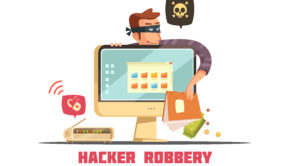Impact of Identity Proofing and Verification in KYC Verification Process
One of the most crucial and non-negotiable steps in confirming an individual’s identity is the identity proofing and verification of documents, also known as Remote Identity Validation (RIV). Companies are offering a secure and seamless verification process to their customers through digital onboarding.
This step of proofing and verification is a necessity to ensure the successful completion of this process. There are two renowned components in securing solutions for identity authentication on a remote basis: identity proofing and identity verification. Let’s delve into the comprehensive details of them:
What is Identity Proofing and Verification?
Identity proofing and identity verification entail the thorough assessment of the documents provided by an individual for verification. Before granting access to relevant software for identity proofing and verification, validation seeking is mandatory, which is carried out under the identity proofing process. To ensure the authenticity of documents in this process, data and evidence provided by individuals are meticulously verified.
It confirms the document’s verification identity authenticity, whether the documents are original or have been prepared with some counterfeit resources. The key objective of identity proofing and verification is to ensure that the documents’ details are precise and belong to the person submitting them for verification. To further ensure that stolen or false identities are not used, additional verification is conducted on documents after proofing them.
How Does Identity Proofing and Verification Work?
Depending on the solution used to perform proofing, several steps exist to complete the proofing stage. Verification of identity documents, biometric information confirmation, and collection of names, addresses, and dates of birth are included in the collection in this process of identity proofing and verification. In some cases, to confirm information from outside the area, third-party collaboration is also utilized by the proofing department in an organization. This could involve cross-referencing data with government databases or other trusted sources to ensure the accuracy of the information provided.
The information collected during the digital identity verification stage shows that information veracity is confirmed through different verification process methods. Verifying addresses and telephone numbers, validating biometric data, and comparing identity documents with the photographs provided are all steps included in this process of identity proofing and verification.
To prevent a wide range of fraudulent activities and threats in an organization, such as identity theft, money laundering, and terrorist financing, along with controlling criminal activities involvement and preventing your system from being hacked by criminals, one of the essential steps is to use identity verification online.
This process comes into play when a new customer enters the system, a new activity has been placed by the organization in the identity proofing and verification process, or any purchase happened within the organization.
It is of utmost importance to consider the implementation of identity proofing and verification checks with great care. From criminal activity resistance, this cannot be made possible if one fails to complete verification of the authentication of the documents attached to the system.
Companies must introduce efficient and productive measures to safeguard against these threats by using identity proofing and verification. The advent of Artificial Intelligence has made various verifications, such as selfie verification, biometric verification, proofing, and document verification, not just beneficial but necessary.
Identity Proofing and Verification Stages
Every process has to go through some stages in which the completion of the process can take place successfully. There are two stages of proofing and verification process:
- Claimed identity: This is the information the user provides at the time of registration with the system, essentially who they claim to be within the access management system.
- Actual Identity: The data which shows the user’s actual identity
Objectives of Identity Proofing and Verification
Going beyond the traditional authentication process, which only includes passwords and usernames, our proofing and verification system ensures a match between users’ actual and claimed identities. During a customer’s onboarding process, we fortify the security with an additional layer of protection within the document verification process.
In the past, organizations used insecure security systems that relied on knowledge-based questions, which could be answered by someone else on the user identity authentication behalf. Today, we employ advanced methods like age verification and phone verification to ensure the utmost security in our verification and proofing industry.
Final Thoughts
More than collecting information from the users, identity proofing online has some profound aspects that have a positive or very concerning impact on the completion of the verification process. Ensuring the authentication of data once collected is an essential step, and proofing and verification make sure that documents are authentic and accurate so that while doing biometric verification and confirmation of the required documents, the system would not waste time.
Before providing access to an individual to your system, it needs to be verified that the data is not stolen or fake and that there is no possibility of fraudulent activity happening to the system due to incomplete or wrong data. A timely manner and simple steps need to be implemented in the verification process so that legitimate members can be accessed quickly and perfectly.
Cover Image by Freepik













